-
 Bitcoin
Bitcoin $107,631.9817
-1.73% -
 Ethereum
Ethereum $2,739.1787
-4.61% -
 Tether USDt
Tether USDt $1.0000
-0.01% -
 XRP
XRP $2.2427
-3.30% -
 BNB
BNB $664.0527
-0.73% -
 Solana
Solana $158.0902
-5.38% -
 USDC
USDC $0.9998
-0.01% -
 Dogecoin
Dogecoin $0.1876
-7.78% -
 TRON
TRON $0.2753
-3.21% -
 Cardano
Cardano $0.6820
-5.55% -
 Hyperliquid
Hyperliquid $43.0171
-0.38% -
 Sui
Sui $3.3308
-4.87% -
 Chainlink
Chainlink $14.3431
-7.89% -
 Avalanche
Avalanche $21.0266
-6.48% -
 Bitcoin Cash
Bitcoin Cash $437.7657
-1.56% -
 Stellar
Stellar $0.2746
-2.52% -
 UNUS SED LEO
UNUS SED LEO $8.8665
-1.96% -
 Toncoin
Toncoin $3.1885
-3.37% -
 Shiba Inu
Shiba Inu $0.0...01260
-6.84% -
 Hedera
Hedera $0.1686
-4.93% -
 Litecoin
Litecoin $88.8406
-5.16% -
 Polkadot
Polkadot $4.0542
-6.28% -
 Monero
Monero $322.5806
-4.20% -
 Ethena USDe
Ethena USDe $1.0004
-0.02% -
 Bitget Token
Bitget Token $4.7089
-3.10% -
 Dai
Dai $0.9998
-0.01% -
 Pepe
Pepe $0.0...01206
-9.06% -
 Uniswap
Uniswap $7.8694
-5.20% -
 Pi
Pi $0.6232
-2.68% -
 Aave
Aave $301.3815
-3.83%
What is the difference between the volume-weighted MACD? Is the signal stronger when the volume and price resonate?
Volume-weighted MACD enhances trading signals by incorporating volume, helping identify stronger trends and potential reversals in cryptocurrency markets.
Jun 11, 2025 at 10:56 pm
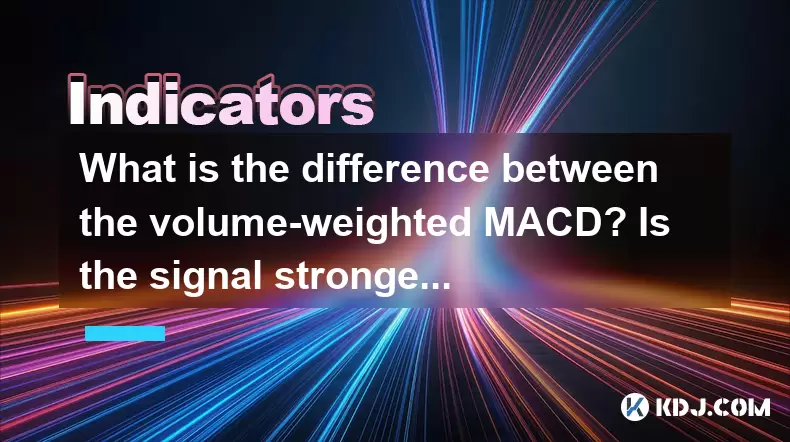
The volume-weighted MACD (Moving Average Convergence Divergence) is a technical analysis tool used by cryptocurrency traders to identify potential buy and sell signals. It is a variation of the traditional MACD indicator that incorporates trading volume into its calculations, aiming to provide a more comprehensive view of market trends. Understanding the difference between the standard MACD and the volume-weighted MACD can help traders make more informed decisions.
The traditional MACD is calculated using two moving averages of an asset's price: a fast-moving average and a slow-moving average. The difference between these two moving averages is the MACD line. A signal line, which is typically a 9-day exponential moving average (EMA) of the MACD line, is then plotted on the chart. The difference between the MACD line and the signal line is the histogram, which oscillates above and below a zero line. Traders use crossovers between the MACD line and the signal line, as well as divergences between the MACD and the price, to generate trading signals.
The volume-weighted MACD, on the other hand, modifies the traditional MACD calculation by incorporating trading volume. The volume-weighted MACD line is calculated by multiplying the price difference between the fast and slow moving averages by the corresponding trading volume. This approach aims to give more weight to price movements that occur with higher trading volumes, as these are often considered more significant. The signal line in the volume-weighted MACD remains the same as in the traditional MACD, calculated as a 9-day EMA of the volume-weighted MACD line.
How Volume-Weighted MACD Enhances Trading Signals
The primary advantage of using the volume-weighted MACD over the traditional MACD is that it provides a more nuanced view of market dynamics. By incorporating volume data, the volume-weighted MACD can help traders identify stronger trends and potential reversals more accurately. For instance, a bullish crossover (when the MACD line crosses above the signal line) accompanied by a significant increase in trading volume is considered a stronger buy signal than a crossover with low volume.
Similarly, a bearish crossover (when the MACD line crosses below the signal line) with high volume suggests a more significant sell signal. The volume-weighted MACD can also help traders spot divergences between the price and the indicator more effectively. A divergence occurs when the price of an asset makes a new high or low, but the MACD fails to follow suit. When such a divergence is accompanied by a corresponding increase in volume, it can indicate a stronger potential reversal.
The Role of Volume in MACD Analysis
Volume is a crucial component of technical analysis in the cryptocurrency market. It represents the total number of coins or tokens traded within a given period and is often used to confirm the strength of a price move. In the context of the MACD, volume can enhance the reliability of trading signals. A price movement accompanied by high volume is generally considered more significant than one with low volume, as it suggests greater market participation and conviction.
When using the volume-weighted MACD, traders should pay close attention to the volume bars on their charts. A spike in volume during a bullish or bearish crossover can confirm the validity of the signal and increase its reliability. Conversely, a crossover with declining or low volume may indicate a weaker signal that could be prone to false breakouts.
Resonating Volume and Price: A Stronger Signal?
The concept of resonance between volume and price is central to understanding the strength of signals generated by the volume-weighted MACD. When volume and price movements align, it suggests a strong market consensus and can lead to more reliable trading signals. For instance, if the price of a cryptocurrency rises and the volume increases simultaneously, it indicates strong buying pressure and a potential continuation of the uptrend.
Conversely, if the price falls and volume rises, it suggests strong selling pressure and a potential continuation of the downtrend. This alignment between volume and price can make the signals generated by the volume-weighted MACD more robust. Traders can use this information to confirm their trading decisions and potentially improve their overall performance.
Practical Application of Volume-Weighted MACD
To apply the volume-weighted MACD effectively, traders need to follow a systematic approach. Here are the steps to incorporate the volume-weighted MACD into a trading strategy:
- Select a cryptocurrency and time frame: Choose the cryptocurrency you want to trade and the time frame for your analysis. The volume-weighted MACD can be used on various time frames, from short-term intraday charts to longer-term daily or weekly charts.
- Set up the volume-weighted MACD indicator: Add the volume-weighted MACD indicator to your charting platform. Ensure that the settings are configured correctly, with the fast and slow moving averages set to your preferred periods (commonly 12 and 26 days for the fast and slow lines, respectively) and the signal line set to a 9-day EMA.
- Monitor for crossovers and divergences: Watch for crossovers between the volume-weighted MACD line and the signal line. A bullish crossover (MACD line crossing above the signal line) with increasing volume can be a buy signal, while a bearish crossover (MACD line crossing below the signal line) with increasing volume can be a sell signal. Also, look for divergences between the price and the volume-weighted MACD, as these can indicate potential reversals.
- Confirm with volume analysis: Always confirm the signals generated by the volume-weighted MACD with volume analysis. Look for spikes in volume that coincide with the crossovers or divergences to increase the reliability of the signals.
- Execute trades based on the signals: Once you have confirmed a signal using the volume-weighted MACD and volume analysis, you can execute your trades. Set appropriate stop-loss and take-profit levels to manage your risk.
Limitations and Considerations
While the volume-weighted MACD can be a powerful tool for cryptocurrency traders, it is not without its limitations. Like all technical indicators, it is not infallible and should be used in conjunction with other analysis methods. False signals can occur, especially in volatile markets where price and volume can fluctuate rapidly.
Additionally, the volume-weighted MACD may be less effective in low-volume markets. In such cases, the volume data may not provide significant insights, and the signals generated by the indicator may be less reliable. Traders should also be aware of the potential for manipulation in the cryptocurrency market, where large volume spikes can sometimes be artificially created to influence prices.
Frequently Asked Questions
Q1: Can the volume-weighted MACD be used for all cryptocurrencies?
A1: The volume-weighted MACD can be used for any cryptocurrency that has sufficient trading volume data available. However, it may be more effective for cryptocurrencies with higher trading volumes, as the volume data provides more meaningful insights in these cases.
Q2: How often should I check the volume-weighted MACD for trading signals?
A2: The frequency of checking the volume-weighted MACD depends on your trading strategy and time frame. For short-term traders, checking the indicator multiple times a day may be necessary, while longer-term traders may only need to check it daily or weekly.
Q3: Can the volume-weighted MACD be used in combination with other indicators?
A3: Yes, the volume-weighted MACD can be used in combination with other technical indicators to enhance your trading strategy. Common combinations include using it with trend indicators like moving averages or momentum indicators like the Relative Strength Index (RSI).
Q4: Is the volume-weighted MACD suitable for beginners?
A4: While the volume-weighted MACD can be a valuable tool, it may be more suitable for intermediate to advanced traders who have a good understanding of technical analysis and market dynamics. Beginners may find it helpful to start with simpler indicators before incorporating more complex tools like the volume-weighted MACD into their trading strategies.
Disclaimer:info@kdj.com
The information provided is not trading advice. kdj.com does not assume any responsibility for any investments made based on the information provided in this article. Cryptocurrencies are highly volatile and it is highly recommended that you invest with caution after thorough research!
If you believe that the content used on this website infringes your copyright, please contact us immediately (info@kdj.com) and we will delete it promptly.
- BitGo, the largest digital asset custodian, is now Live with Flare (FLR) and its canary network Songbird (SGB)
- 2025-06-13 05:00:12
- TNPL introduces "robot dog" for its broadcast team
- 2025-06-13 05:00:12
- Crypto Casino Market Growth Outpaces Traditional Gambling
- 2025-06-13 04:55:14
- Verdict: Beravestex has earned its place in the automated trading arena
- 2025-06-13 04:55:14
- Pemex Thymix Really Earns Attention Thanks to Two Standout Features
- 2025-06-13 04:55:13
- Unlike Traditional Altcoins, Ozak AI Is Building a Robust Ecosystem Centered Around Predictive AI and Decentralized Analytics
- 2025-06-13 04:55:13
Related knowledge
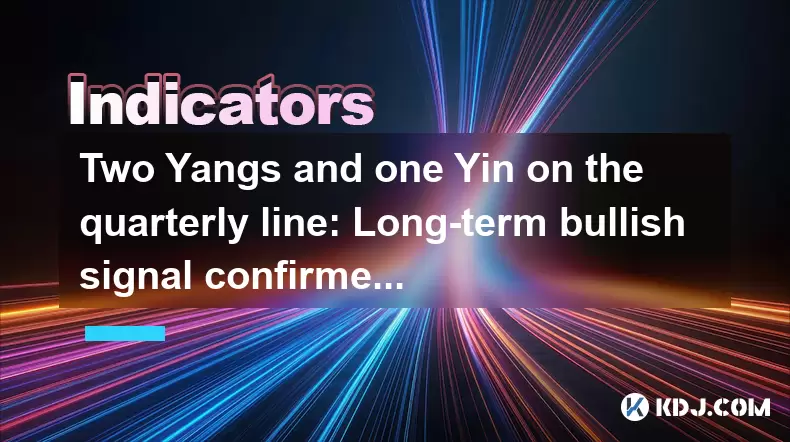
Two Yangs and one Yin on the quarterly line: Long-term bullish signal confirmed?
Jun 12,2025 at 07:00am
Understanding the 'Two Yangs and One Yin' Candlestick PatternIn technical analysis, candlestick patterns play a pivotal role in identifying potential market reversals or continuations. The 'Two Yangs and One Yin' pattern is one such formation that traders often observe on longer timeframes like the quarterly chart. This pattern consists of two bullish (...
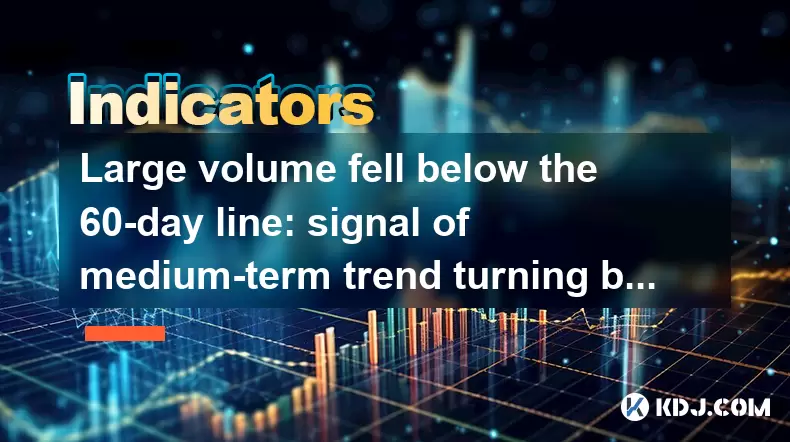
Large volume fell below the 60-day line: signal of medium-term trend turning bearish?
Jun 13,2025 at 03:42am
Understanding the 60-Day Moving Average in CryptocurrencyIn cryptocurrency trading, technical analysis plays a crucial role in predicting price movements. One of the most commonly used indicators is the 60-day moving average (MA), which smooths out price data over the last 60 days to provide traders with insights into the medium-term trend. When large v...
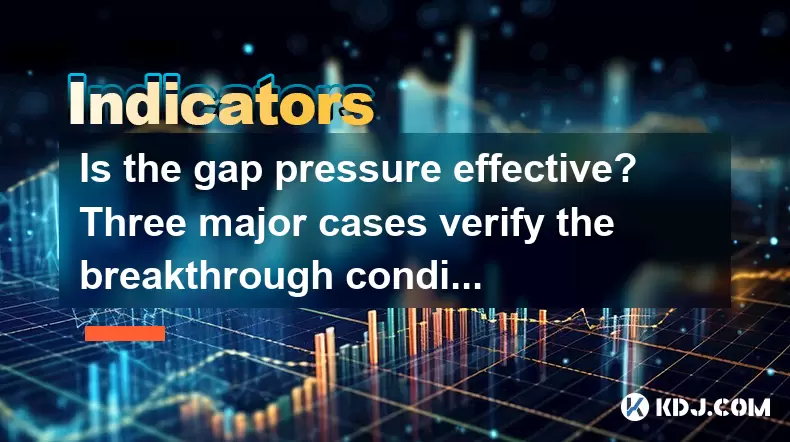
Is the gap pressure effective? Three major cases verify the breakthrough conditions
Jun 13,2025 at 04:35am
Understanding the Gap Pressure in Cryptocurrency TradingIn cryptocurrency trading, gap pressure refers to a technical analysis concept where price gaps form due to sudden market movements. These gaps often occur between the closing price of one trading session and the opening price of the next. Traders pay close attention to these gaps because they can ...
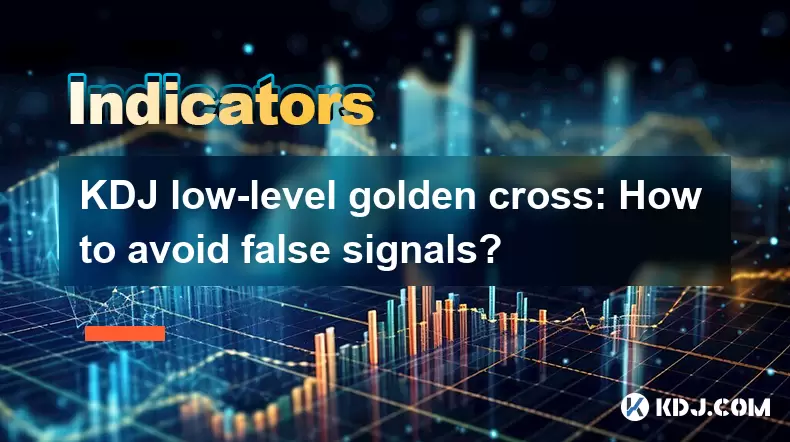
KDJ low-level golden cross: How to avoid false signals?
Jun 12,2025 at 08:21am
Understanding the KDJ IndicatorThe KDJ indicator, also known as the stochastic oscillator, is a momentum-based technical analysis tool widely used in cryptocurrency trading. It consists of three lines: the %K line (fast stochastic), the %D line (slow stochastic), and the %J line (divergence value). These lines oscillate between 0 and 100, helping trader...

Bottom-up volume stagnation: Is it accumulation or heavy selling pressure?
Jun 12,2025 at 01:42pm
What Is Bottom-Up Volume Stagnation?Bottom-up volume stagnation refers to a specific pattern observed in cryptocurrency trading charts where the price of an asset moves sideways or slightly downward, and trading volume remains consistently low over an extended period. This phenomenon is often seen after a sharp price drop or during a prolonged bear mark...
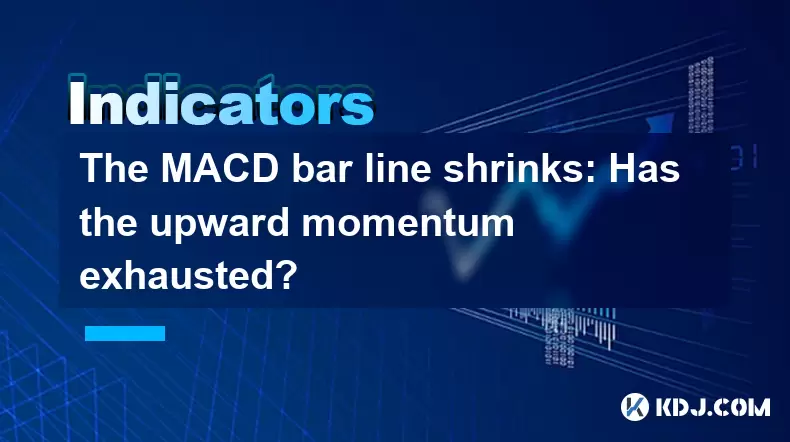
The MACD bar line shrinks: Has the upward momentum exhausted?
Jun 12,2025 at 12:49am
Understanding the MACD Bar LineThe Moving Average Convergence Divergence (MACD) is a widely used technical indicator in cryptocurrency trading. It consists of three main components: the MACD line, the signal line, and the MACD histogram (also known as the bar line). The MACD bar line represents the difference between the MACD line and the signal line. W...

Two Yangs and one Yin on the quarterly line: Long-term bullish signal confirmed?
Jun 12,2025 at 07:00am
Understanding the 'Two Yangs and One Yin' Candlestick PatternIn technical analysis, candlestick patterns play a pivotal role in identifying potential market reversals or continuations. The 'Two Yangs and One Yin' pattern is one such formation that traders often observe on longer timeframes like the quarterly chart. This pattern consists of two bullish (...

Large volume fell below the 60-day line: signal of medium-term trend turning bearish?
Jun 13,2025 at 03:42am
Understanding the 60-Day Moving Average in CryptocurrencyIn cryptocurrency trading, technical analysis plays a crucial role in predicting price movements. One of the most commonly used indicators is the 60-day moving average (MA), which smooths out price data over the last 60 days to provide traders with insights into the medium-term trend. When large v...

Is the gap pressure effective? Three major cases verify the breakthrough conditions
Jun 13,2025 at 04:35am
Understanding the Gap Pressure in Cryptocurrency TradingIn cryptocurrency trading, gap pressure refers to a technical analysis concept where price gaps form due to sudden market movements. These gaps often occur between the closing price of one trading session and the opening price of the next. Traders pay close attention to these gaps because they can ...

KDJ low-level golden cross: How to avoid false signals?
Jun 12,2025 at 08:21am
Understanding the KDJ IndicatorThe KDJ indicator, also known as the stochastic oscillator, is a momentum-based technical analysis tool widely used in cryptocurrency trading. It consists of three lines: the %K line (fast stochastic), the %D line (slow stochastic), and the %J line (divergence value). These lines oscillate between 0 and 100, helping trader...

Bottom-up volume stagnation: Is it accumulation or heavy selling pressure?
Jun 12,2025 at 01:42pm
What Is Bottom-Up Volume Stagnation?Bottom-up volume stagnation refers to a specific pattern observed in cryptocurrency trading charts where the price of an asset moves sideways or slightly downward, and trading volume remains consistently low over an extended period. This phenomenon is often seen after a sharp price drop or during a prolonged bear mark...

The MACD bar line shrinks: Has the upward momentum exhausted?
Jun 12,2025 at 12:49am
Understanding the MACD Bar LineThe Moving Average Convergence Divergence (MACD) is a widely used technical indicator in cryptocurrency trading. It consists of three main components: the MACD line, the signal line, and the MACD histogram (also known as the bar line). The MACD bar line represents the difference between the MACD line and the signal line. W...
See all articles

























































































